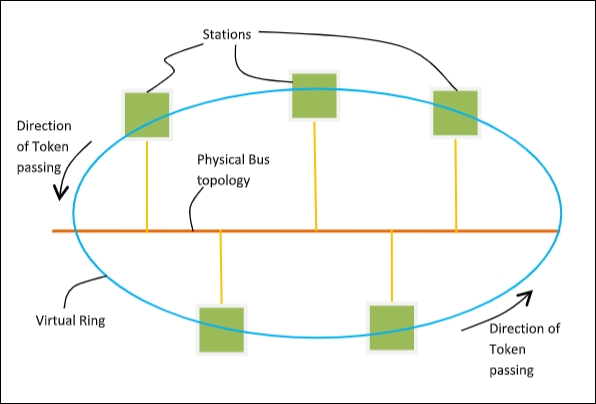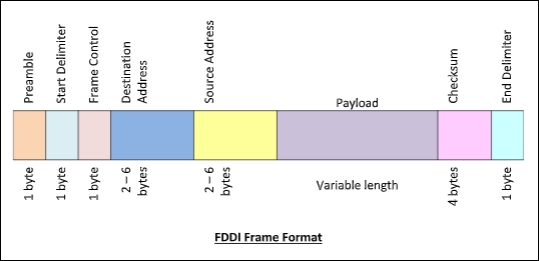
 Data Structure
Data Structure Networking
Networking RDBMS
RDBMS Operating System
Operating System Java
Java MS Excel
MS Excel iOS
iOS HTML
HTML CSS
CSS Android
Android Python
Python C Programming
C Programming C++
C++ C#
C# MongoDB
MongoDB MySQL
MySQL Javascript
Javascript PHP
PHP
- Selected Reading
- UPSC IAS Exams Notes
- Developer's Best Practices
- Questions and Answers
- Effective Resume Writing
- HR Interview Questions
- Computer Glossary
- Who is Who
Token Bus (IEEE 802.4) Network
Token Bus (IEEE 802.4) is a standard for implementing token ring over the virtual ring in LANs. The physical media has a bus or a tree topology and uses coaxial cables. A virtual ring is created with the nodes/stations and the token is passed from one node to the next in a sequence along this virtual ring. Each node knows the address of its preceding station and its succeeding station. A station can only transmit data when it has the token. The working principle of the token bus is similar to Token Ring.
Token Passing Mechanism in Token Bus
A token is a small message that circulates among the stations of a computer network providing permission to the stations for transmission. If a station has data to transmit when it receives a token, it sends the data and then passes the token to the next station; otherwise, it simply passes the token to the next station. This is depicted in the following diagram −

Frame Format of Token Bus
The frame format is given by the following diagram −

The fields of a token bus frame are −
Preamble: 1 byte for synchronization.
Start Delimiter: 1 byte that marks the beginning of the frame.
Frame Control: 1 byte that specifies whether this is a data frame or control frame.
Destination Address: 2-6 bytes that specifies address of destination station.
Source Address: 2-6 bytes that specifies address of source station.
Payload: A variable length field that carries the data from the network layer.
- Checksum: 4 bytes frame check sequence for error detection.
End Delimiter: 1 byte that marks the end of the frame.

